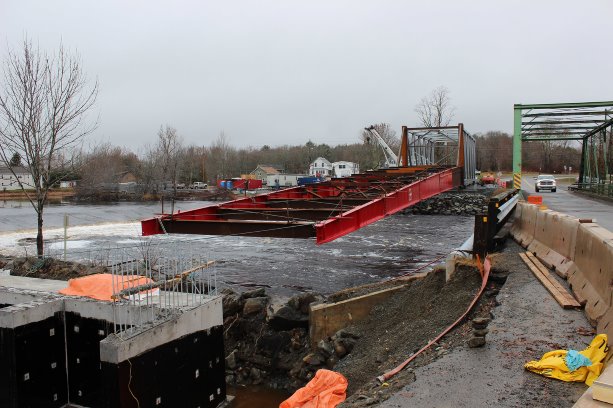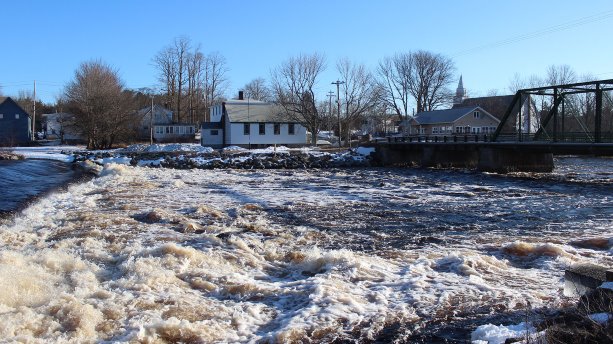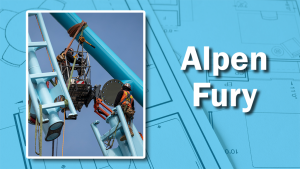In stormy weather, the fast-moving Mersey River in Nova Scotia has risen quickly — sometimes by a metre or more — and that proved a key factor for the Nova Scotia Transportation and Infrastructure Renewal’s (NSTIR) bridge engineering team when it planned a new crossing over the river at the village of Milton.
The bridge, a 73-metre-long clear-span steel truss structure supported on two concrete abutments, each on opposite banks of the river, will be completed later this winter. It is a design departure from the existing 116-year-old steel and timber-span bridge it will replace, which has three concrete piers in the river.
"You don’t want to put piers in the river if you can avoid it," says Greg Connors, because they can be expensive to construct. "If possible, it is better to avoid constructing in any watercourse from an environmental perspective."
Connors, NSTIR bridge engineer, was responsible for coming up with a suitable replacement plan. Topping the agenda was accounting for the storm water flow of the river. Climate change was a sub factor.
"On any new design (climate change) is one of the larger factors we put into play (in determining) what size and elevation we put our bridges at," he says, noting that increasingly rivers in the province are overflowing their banks.
NSTIR retained a consultant (now called Amec Foster Wheeler) to make recommendations on the optimum elevation of the crossing over the river.
"Because it is a secondary road, not a large highway, we were directed to build the underside of the superstructure 300 millimetres above the extreme high-water mark."
The original high-water elevation surveyed is one metre, but factoring in climate change affecting storms the river could rise by another metre.
"That says something because the cross-section of the river is 70 metres. You can imagine that volume of flow after a large storm."
Connors says preliminary engineering presented a number of challenges — usually the challenges are further in "at the meat of the design."
A big concern from the outset was how to engineer a shallow superstructure, 833 millimetres deep, on the long span crossing to ensure that the underside of the bridge clears the high-water mark but doesn’t result in a structure so high that the two-lane crossing wouldn’t align with nearby road intersections in Milton.
That’s where the clear-span truss came into play.
Such a shallow superstructure "is uncommon." If, by comparison, a concrete girder/deck structure was built, its deep superstructure (about two metres) would have increased the overall height of the bridge, putting it out of alignment with intersecting roads on either side.
"You would have such a steep incline off the bridge (to meet the intersections) that cars would be getting stuck on the incline (in inclement weather)," Connors explains.
The modular structural design, prefabricated by Canam, consists of cross-bracing about nine metres above the underside of the bridge which gives the shallow superstructure the strength it requires for the long crossing, he says.
"I’m sure residents of Milton will question why we needed to build such a tall bridge (compared to the existing one). There were a lot of constraints we had to deal with."
To install the large-span truss, the crews "launched" (pushed) it from one concrete abutment across the river to the second abutment on the opposite bank. The truss had a "large counterweight" to keep it stable as it was pushed incrementally with an excavator, says Connors, noting the process took more than a month.
The completed two-lane bridge with shoulders will have a steel deck with a rubberized coating road surface, says Connors. Often bridges over rivers consist of steel girders and concrete decks, but the Milton crossing is different.
"It is a little more straightforward because two concrete abutments and a steel truss take less time to erect. We got a little lucky because bedrock is really shallow," he adds.
Construction of the new crossing started in November 2015. The contractor is Dexter Construction with Canam completing the erection. Canam also was contracted by NSTIR to supply the truss.
The existing bridge, 15 metres away, will be dismantled next summer when the Mersey is at low ebb.












Recent Comments
comments for this post are closed